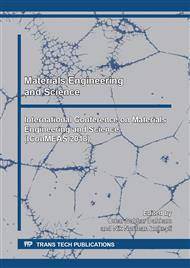p.16
p.23
p.29
p.34
p.41
p.48
p.54
p.60
p.67
Analysis and Evaluating of Flexible Ankle Foot Orthosis for Drop Foot Deformity
Abstract:
This work involved two major parts: the first Part is the experimental part included manufacturing ankle foot orthotics, measure the (the reaction force of the ground, pressure distribution) for both normal (healthy) and sound side (intake) legs in two case, the first measurement when the patient walking without orthosis while the second test when the patient dressed up the flexible (AFO). The pressure generated between leg and calf part is measured by F-Socket devise. The experimental part also consist test the mechanical properties of a suggestion composite material. The second Part is the (FEM) finite element analysis for numerical simulation part during which the stresses are calculated using ANSYS 14.5 software. Experimental work was done on a case study suffering from low level spinal cord trauma he has good control of the trunk muscles but the muscle weakness and nerve damage for right leg. The patient with age, weight of 30years, 75kg, respectively. The Results show the parameters of test for both legs (left and right) in two cases. The results show that the data of the gait cycle in the case of the patient wearing the brace is more acceptable and we notice improvement in the performance of walking steps and reduce the difference between the infected leg and natural and this indicates the good evaluation of this orthosis. Max pressure obtained is 1.53*10^5MPa from F .Socket at calf region .Max stress Calculated at Posterior ankle joint because it is flexible Position The equivalent Von-Mises stress and the safety factor for fatigue of the composite material gave good results this led to the longer life design.
Info:
Periodical:
Pages:
41-47
Citation:
Online since:
January 2020
Authors:
Price:
Сopyright:
© 2020 Trans Tech Publications Ltd. All Rights Reserved
Share:
Citation:


